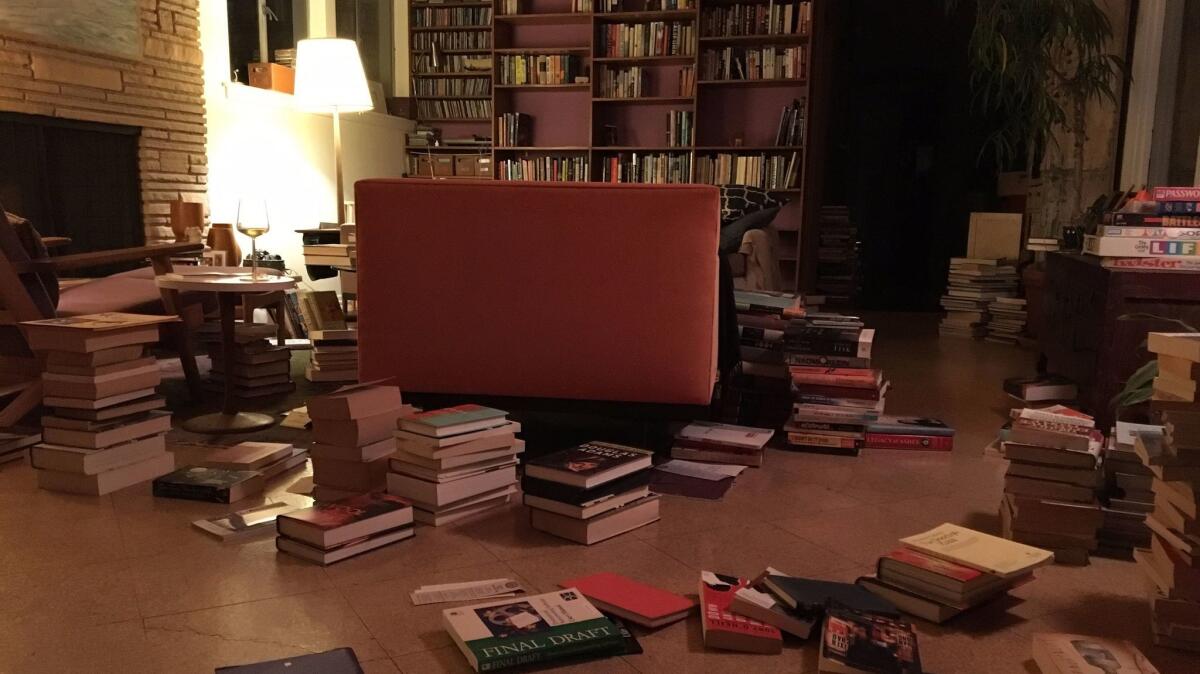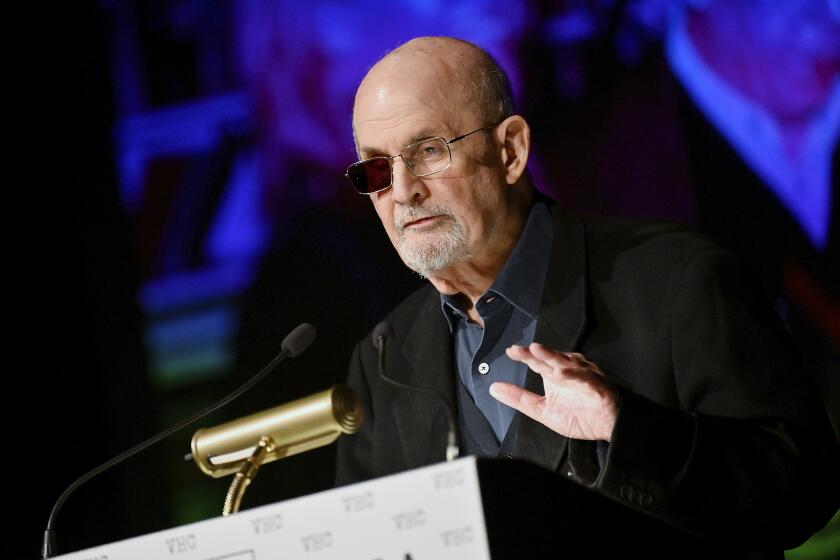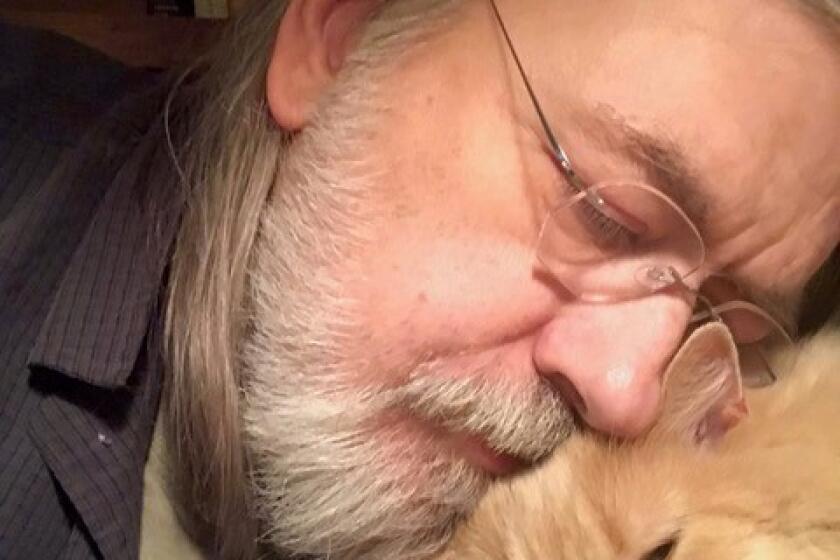So many books to help you get rid of stuff (like too many books)

It was after my mother’s death, when my brother and I were tasked with cleaning out the basement of her home in Kansas City, that I realized my late stepfather had been a hoarder. The old clothes, broken furniture, dusty adding machines and boxes filled with papers, felt like the accrual of a typical American life; even 30 years of Kansas University basketball team calendars felt normal enough given that he’d asked to be buried holding a Jayhawks-branded basketball in his hands.
The point where I realized he was a hoarder was when I found the back half of the basement devoted to stacks of brand-new power tools and unused building supplies; as if some dystopian future might need seven belt sanders, six orbital sanders, a baker’s dozen of power drills and jigsaws and skill saws. There were boxes of hammers, ratchet sets, and wrenches; a massive stack of nails, screws, clamps and the little doodads you need to attach things to other things; all of it unused; the packaging unopened.
He was not, I should clarify, a handyman or the kind of hobbyist who might fix a doorjamb or build a birdhouse. He was lonely. Buying things at the hardware store gave him a reason to turn off the TV, get out of his chair and interact with humans. Specifically: humans who worked in hardware stores.
It was a lot of stuff, more than any sane person who was not a building contractor should have. I once asked my mother what she thought of all the unused hardware and power tools in the basement. What did she think he was going to do with them? She just lit a cigarette and said, “It gets him out of the house.” If shopping provided him a few moments of connection, having piles of stuff did not make him a happy person. He was, anecdotally, the grouchiest person in the Kansas City Metro area.
Stuff, stuff and less stuff
That stuff-to-happiness equation is at the heart of one of the hottest trends in publishing for the last few years. Publishers have been pumping out book after book celebrating the rewards of getting rid of stuff. Japanese author Marie Kondo’s “The Life-Changing Magic of Tidying Up” and “Spark Joy” have sold over 7 million copies worldwide, and she’s got another coming next month: “The Life-Changing Manga of Tidying Up: A Magical Story” a graphic novel which casts Kondo as a kind of joy-sparking Sailor Moon who helps a disorganized young woman get her life in order.
While Kondo is the leading edge of the decluttering tsunami, there are dozens of similar books:
- “The Joy of Less: A Minimalist Guide to Declutter, Organize, and Simplify” by Francine Jay
- “Unstuffed: Decluttering Your Home, Mind, and Soul” by Ruth Soukup
- “Breathing Room: Open Your Heart by Decluttering Your Home” by Melva Green and Lauren Rosenfeld
- “Let it Go: Downsizing Your Way to a Richer, Happier Life,” “Lose The Clutter, Lose the Weight: The Six-Week Total Life Slim Down” and more by Peter Walsh
- “The Art of Discarding: How to Get Rid of Clutter and Find Joy” by Nagisa Tatsumi
- “Minimalism: Live a Meaningful Life” by Joshua Fields Millburn and Ryan Nicodemus
- “The More of Less: Finding the Life You Want Under Everything You Own” by Joshua Becker
- “Make Your Bed: Little Things That Can Change Your Life…And Maybe the World” by Admiral William H. McRaven
Mission: Declutter
When I returned from cleaning out my mother’s basement (please note that the power tools and building supplies were donated to charity), my wife suggested that perhaps it was time we do a little decluttering of our own so that our children would never have to venture into a dusty basement of earthly detritus.
I am not someone with a hoarding disorder — what the Mayo Clinic calls “a persistent difficulty discarding or parting with possessions because of a perceived need to save them” — but like that paunch that develops in middle age, some accumulation has occurred despite my best efforts. So we undertook a serious study of the literary works of Marie Kondo. This was done with some trepidation on my part, because, as Kondo says, “tidying up means confronting yourself.”
Nine months into this pursuit of happiness through decluttering, this “Kondo-ization” of our home, and we’ve completed all but the final step (the “sentimental items” purge). It turns out it is surprisingly easy to ask yourself: “Does this vegetable peeler spark joy?” If it does, if it is, for example, the only vegetable peeler you own, you keep it. If it is one of three and doesn’t really work, you chuck it. It was the same sorting through clothes and papers. Haven’t worn those pants in years? Into the box for charity. Receipts from 1998 to 2009? To the shredder. As Kondo writes, “Remember that you are not choosing what to discard but rather what to keep. Keep only those things that bring you joy.”
Despite my reservations, it felt good to clean out closets, to empty old files; to my surprise, Kondo’s method actually sparked a feeling that was, if not joyful, somewhat joyesque.

But the books!
Getting rid of books was more difficult. It felt like getting rid of old friends: drinking buddies, reliable pals, that mysterious person you met on a train, ex-lovers you still kinda have a thing for. To complicate this, I have been self-diagnosed with tsundoku, a disorder that Hector Tobar described in The Times as, “a person who buys books and doesn’t read them, and then lets them pile up on the floor, on shelves and assorted pieces of furniture.” I confronted myself with the hard truth that maybe the bookstore is my version of my stepfather’s hardware store.
To cope with the trauma of getting rid of all these books, I bought a book: “Goodbye, Things: The New Japanese Minimalism” by Fumio Sasaki. Where Marie Kondo takes a kind of the high-fiber, eat more fruits and vegetables for a gentle joyful purging; Sasaki is direct, more high-colonic. A merciless minimalist, he cuts to the chase, “Why do we own so many things when we don’t need them? What is their purpose? I think the answer is quite clear: We’re desperate to convey our own worth, our own value to others. We use objects to tell people just how valuable we are.”
I’m all for unsubscribing to newsletters... but I don’t think I’m ready to defriend nonessential friends. Can a friend even be nonessential?
How did he know I never finished “Infinite Jest” and left it on the shelf just to look cool? Did
What is essential?
Sasaki’s version of decluttering doesn’t end at things; his minimalism extends to our digital lives and interpersonal relationships. “It’s an attempt to reduce the things that aren’t essential so we can appreciate the things that really are precious to us.” The goal is to become the authentic, original version of you, unencumbered by things, the desire for things or the self-esteem we get from possessing things. As he says, “It’s experience that builds our unique characteristics, not material objects.” I find myself agreeing with him philosophically; on a practical level I’m all for unsubscribing to newsletters that clutter my inbox, but I don’t think I’m ready to defriend nonessential friends. Can a friend even be nonessential?
Both Kondo and Sasaki celebrate the sense of liberation you get from deleting things from your life. Less time spent shopping, cleaning or otherwise engaged with objects gives us time to daydream, to let our bodies rest and our minds wander, to do whatever it is that might lead us to happiness. It makes you wonder what the world might be like if everyone followed this philosophy.
I know my mother would’ve been thrilled to have a husband who took her out dancing or to the movies, to spend time together doing something, rather than parked glumly in front of the television. And after his death she met someone who took her dancing. He wasn’t a minimalist, but he valued experiences and activities over objects, and it sparked joy for her.
Following Kondo’s advice, I have been able to confront myself in most areas of my life, but when it came to books, I needed Sasaki’s brutality toward objects to really finish the job. Ultimately we were able to purge over 500 books from our shelves, donating them to local charities. Despite the cold sweats, tremors, and outbreak of adult acne — symptoms of tsundoku-withdrawal — I ended up feeling good about it.
Now I have space for new books.
Smith is the author of five novels and, most recently, the nonfiction book “Naked at Lunch.” He’s on Twitter @encurtido.
Sign up for our Book Club newsletter
Get the latest news, events and more from the Los Angeles Times Book Club, and help us get L.A. reading and talking.
You may occasionally receive promotional content from the Los Angeles Times.



